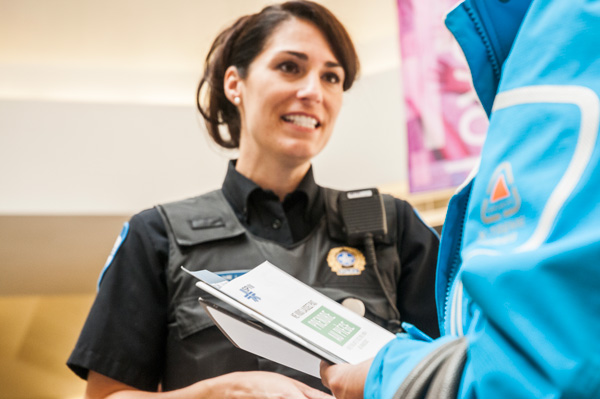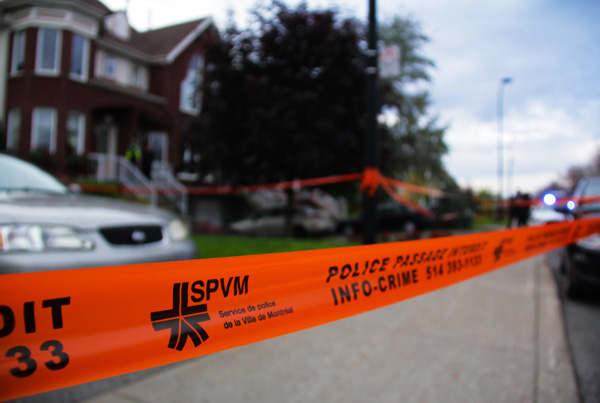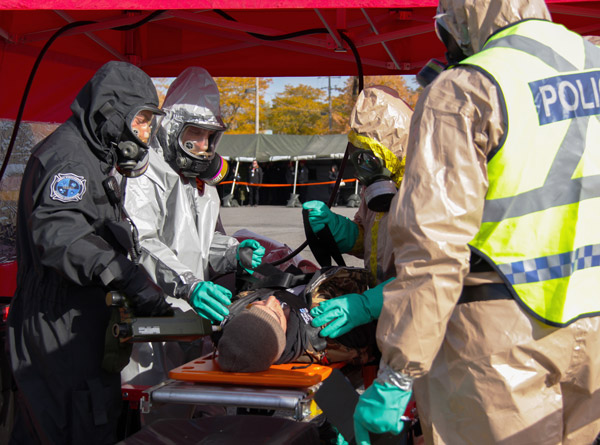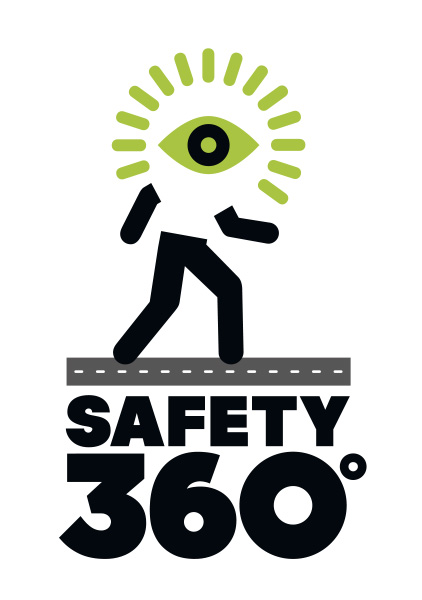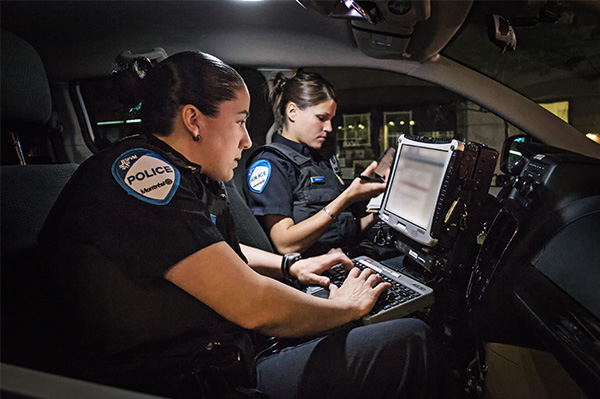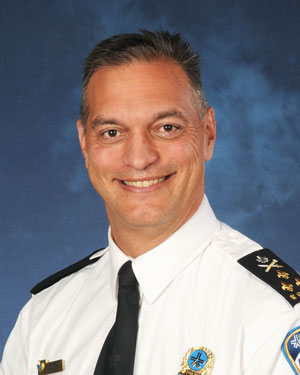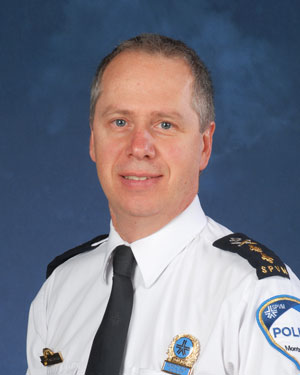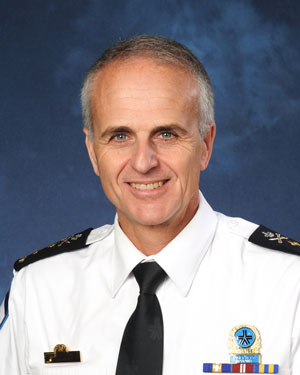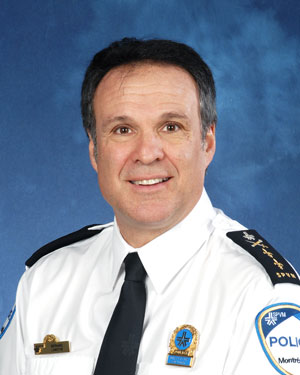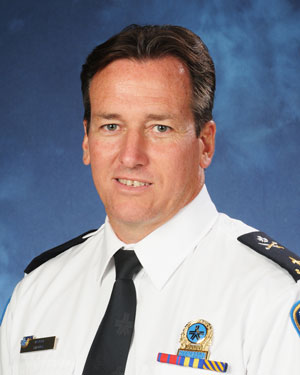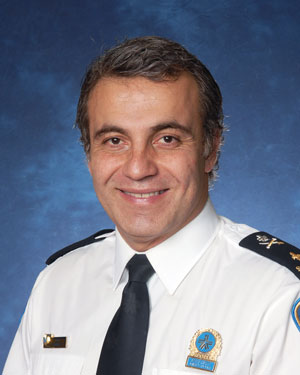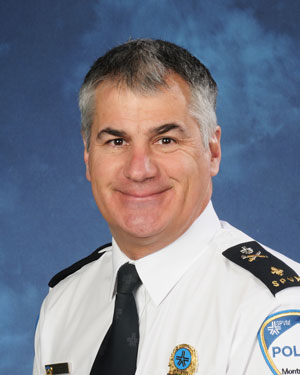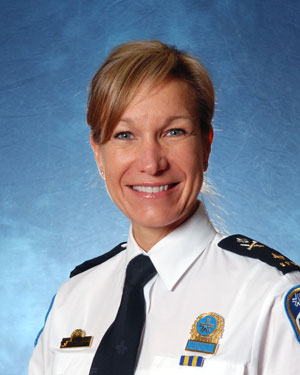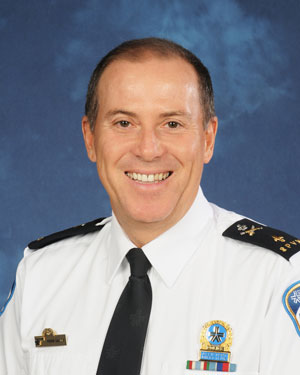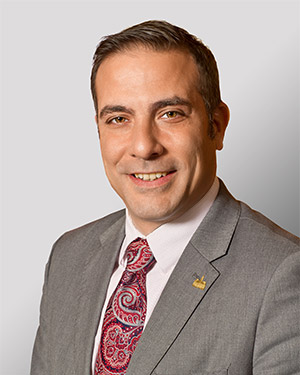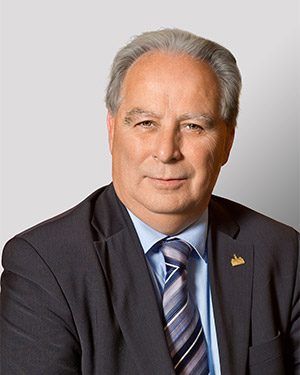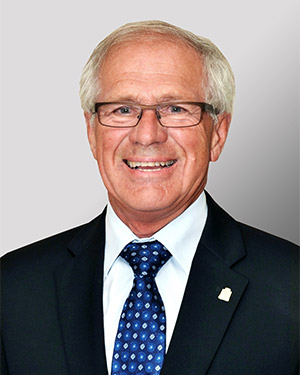Service de police
de la Ville de Montréal
Annual Report
Toward the police
of the future
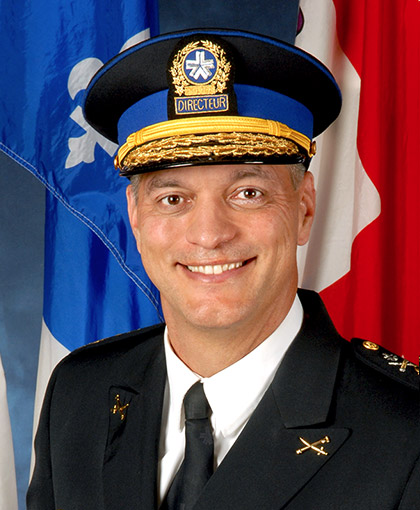
Philippe Pichet
Director of the Service de police de la Ville de Montréal

Anie Samson
Chair of the Commission de la sécurité publique
In the field
Montréal reality
New
Committing to the future
Vision
With the 2015 arrival of new Director Philippe Pichet, the SPVM has a new vision: Committing to the future.
It is a vision to modernize its police service, adapt it to the reality of its citizens and meet their needs through effective use of its resources. The police of the future also means police officers who are close to citizens, work with them and community organizations, health and social services, and justice and education partners, among others. Committing to the future also means mobilizing all players in the field so that they all contribute to public safety, crime prevention, quality of life and neighbourhood tranquillity in their own way. Like the City of Montréal, the SPVM also works to promote better community living and highlight the City of Montréal as one of the safest cities in North America.
Montréal’s police is the police of the future!
Guiding principles
The vision is based on four guiding principles that will lead to its achievement.
- The Service’s sense of pride
- Optimizing the use of existing resources
- Serving better together
- How can I make a difference?
The Service’s sense of pride
The sense of pride associated with the work of both police officers and civilian staff comes to life every day, as all work for citizens. Listening and communicating with them, actively cooperating with our partners, taking concerted action, targeting excellence and working hard to give the people of Montréal services that meet their needs: these all contribute to our police officers’ and civilian staff’s sense of pride. Furthermore, this feeling must be shared, felt and expressed by all.
The SPVM’s values—respect, integrity and engagement—must continue to be advocated and embodied by all, as they are an integral part of this sense of pride.
Optimizing the use of existing resources
Crime complexity
With all the information technology available, crime is growing more complex. Terrorist threats, radicalization leading to violence and cybercrime, for example, force us to come up with new ways to fight crime, and we need to work closely with our partners to achieve this.
Road safety
Road safety remains a major challenge. We need to continue working to incite users to adopt safe behaviours on the road. By optimizing our resources, we can target our presence and set up initiatives that ensure the safety of users affected by road repairs and construction work.
Demonstrations and gatherings
The management of increasingly frequent demonstrations and gatherings is a significant concern in terms of cost and resources. As a police organization, regardless of the economic or social context, we need to ensure—without compromise—the safety of protesters and police officers, as well as citizens and merchants who find themselves in these places where social demands occur.
Two-way communication
From a smart city standpoint, continuous, quick and effective two-way communication between police officers, elected officials, partners and citizens is required to maintain the peace. The SPVM does its best to inform citizens and answer them while respecting their legal obligations.
Serving better together
The strength of partnerships
For several years, the SPVM has been advocating the importance of partnerships and joint efforts when it comes to public safety. Partnerships begin with inter-relationships and discussions within our own units. They then extend to the City’s different services, our employees union associations, fellow officers from other municipal, provincial and federal services, multiple community organizations, health, social services, education, justice, public safety and business representatives, not to mention Montreal merchants, our citizens and various ethno-cultural communities in Montréal. Several partnerships already exist and are consolidated, but others need to be reinforced or developed, and this is what the SPVM will do, among other things, to make a difference.
Consolidating a public safety network
In the coming years, the SPVM would like to formalize this network of partners into a public safety network with a flexible governance model. Together, we are helping make Montréal safe. We are able to explain and understand the different realities we face. We are able to provide greater support to vulnerable clienteles and discern places where interventions are needed and sometimes identify the best approaches or potential solutions to apply in order to intervene better. Our strength comes from each individual’s expertise. Through this network, the SPVM is the anchor point for public safety and protection in order to unite all partners in facing emerging challenges.
How can I make a difference?
This is the question everyone should be asking. It is by combining everyone’s strengths, varied expertise and talents that a difference can be made. Through this public safety network, the SPVM is looking to the future and encourages its partners to do the same. By mobilizing all the players, they can all make a difference.
Organizational structure
To support the vision, guiding principles, organizations objectives, operations, investigations and management, the SPVM proposed a new organizational structure at the end of 2015. It was endorsed by the City of Montréal and came into effect on January 1, 2016. This new structure essentially targets three objectives:
- To increase the efficiency, effectiveness, coordination and consistency of its services
- To implement a Strategic division for the police of the future
- To balance staff in order to optimize existing resources
The SPVM therefore has three Directions: the Strategic Direction, the Corporate Services Direction and the Operations Direction.
Statistics
Police personnel
Men
3,127
Men
Women
1,459
Women
Total
4,586
Total
Collisions since the creation of traffic units in 2006
%
Fatal collisions: 59% decrease
%
Collisions with major injuries: 51% decrease
Aggravated thefts and extortion
- A decline of 38% since 2011 38%
Breaking and entering
- A decline of 50% in the last 10 years 50%

1,406,364
Number of calls to 9-1-1
33,000
Number of calls regarding individuals who are mentally disturbed or in crisis
6,890
Number of offences reported online
438
Number of transportations by the SPVM for the Canadian Organ Donors Association (CODA)
1,076
Crowd controls

